As a proud member of the Porsche family, I’m excited to share my extensive experience towing a 28′ Airstream with my 2012 Porsche Cayenne Turbo. Living in Las Vegas, I’ve put my Cayenne through some serious towing miles, and I want to provide a real-life perspective on its capabilities, along with some insights into mechanical issues that have emerged.
To ensure my Cayenne Turbo was up to the task of towing, I invested in several key upgrades:
- Hitch Reinforcement: Professionally installed at Can-Am RV in London, Ontario, for enhanced structural integrity.
- Prodigy P2 Brake Controller: For seamless and responsive trailer brake control.
- Equalizer 1000 lbs Weight Distribution Hitch: To evenly distribute weight and enhance stability.
My 2012 Cayenne Turbo came factory-equipped with features crucial for towing, including:
- Porsche Torque Vectoring (PTV): For improved handling and stability.
- Air Suspension (PASM): Porsche Active Suspension Management for optimal ride and load leveling.
- Towing Package: Factory-installed towing preparation.
Last summer, I embarked on a 9,000-mile towing adventure with my 2019 Airstream 27FB. Fully loaded, my Cayenne Turbo, including two passengers, a German Shepherd, camping gear, and more, weighed approximately 6,700 lbs. While this is slightly above the Cayenne’s official maximum weight, the Airstream itself, packed with essentials, was around 6,500 lbs, well within the towing capacity. The tongue weight was approximately 850 lbs. Our journey took us from Las Vegas, NV, to Grande Prairie, AB, exploring diverse terrains and even some off-road trails with the Airstream in tow. The entire trip spanned four memorable months.
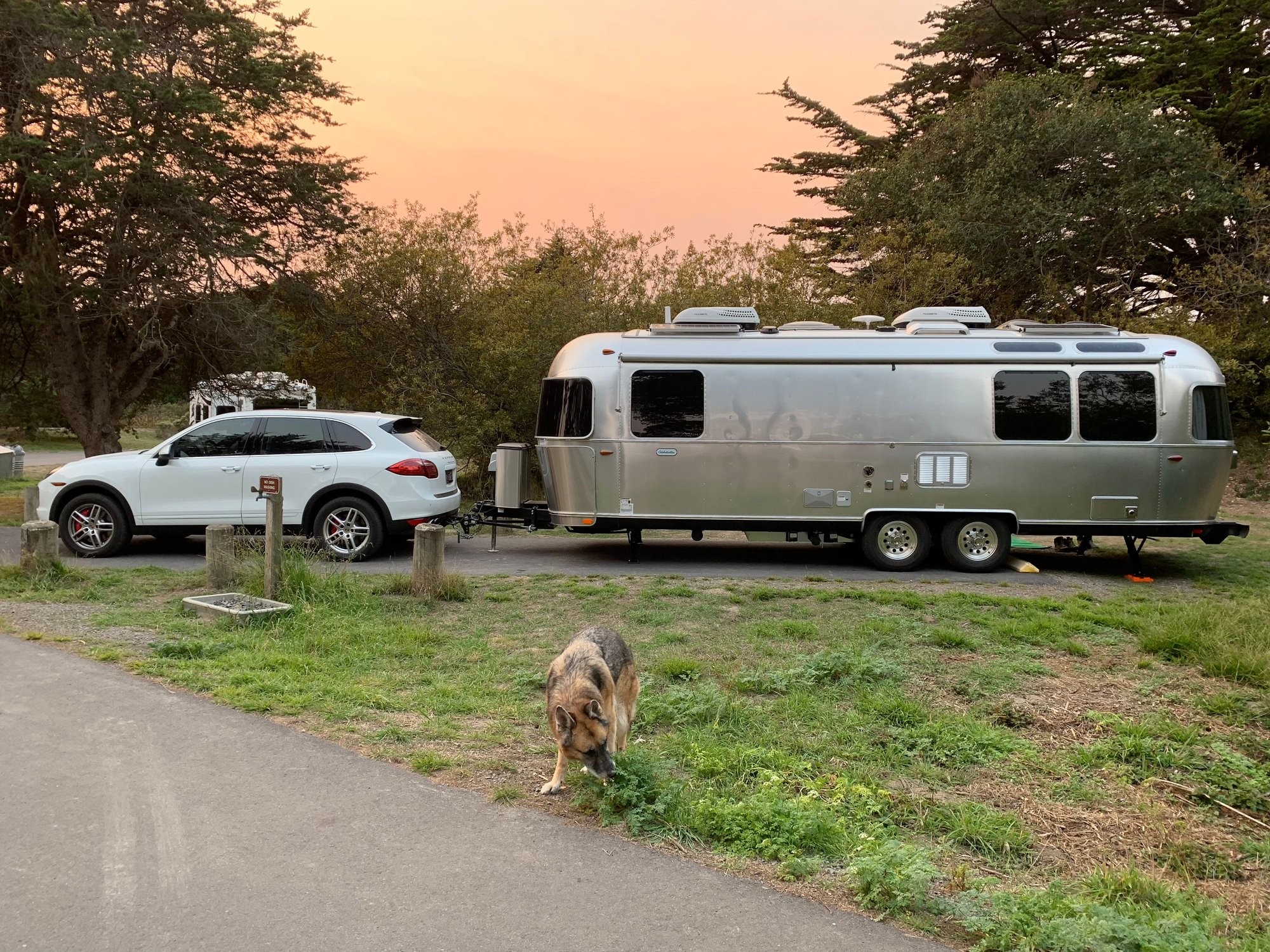 2012 Porsche Cayenne Turbo towing an Airstream trailer on a scenic road
2012 Porsche Cayenne Turbo towing an Airstream trailer on a scenic road
Towing Performance and Stability
The towing experience with the 2012 Porsche Cayenne Turbo was truly exceptional. Power was never an issue; the Cayenne Turbo delivered immense power on demand. Overtaking other vehicles was effortless – a simple push of the accelerator would catapult us forward, even with the considerable weight of the Airstream behind.
Stability was equally impressive. I never experienced any sway or lateral instability, even when encountering semi-trucks or strong crosswinds. Many people towing trailers often complain about lateral instability, but this was simply not an issue with the Cayenne Turbo. Both the Cayenne and the Airstream felt firmly planted and controlled at all times.
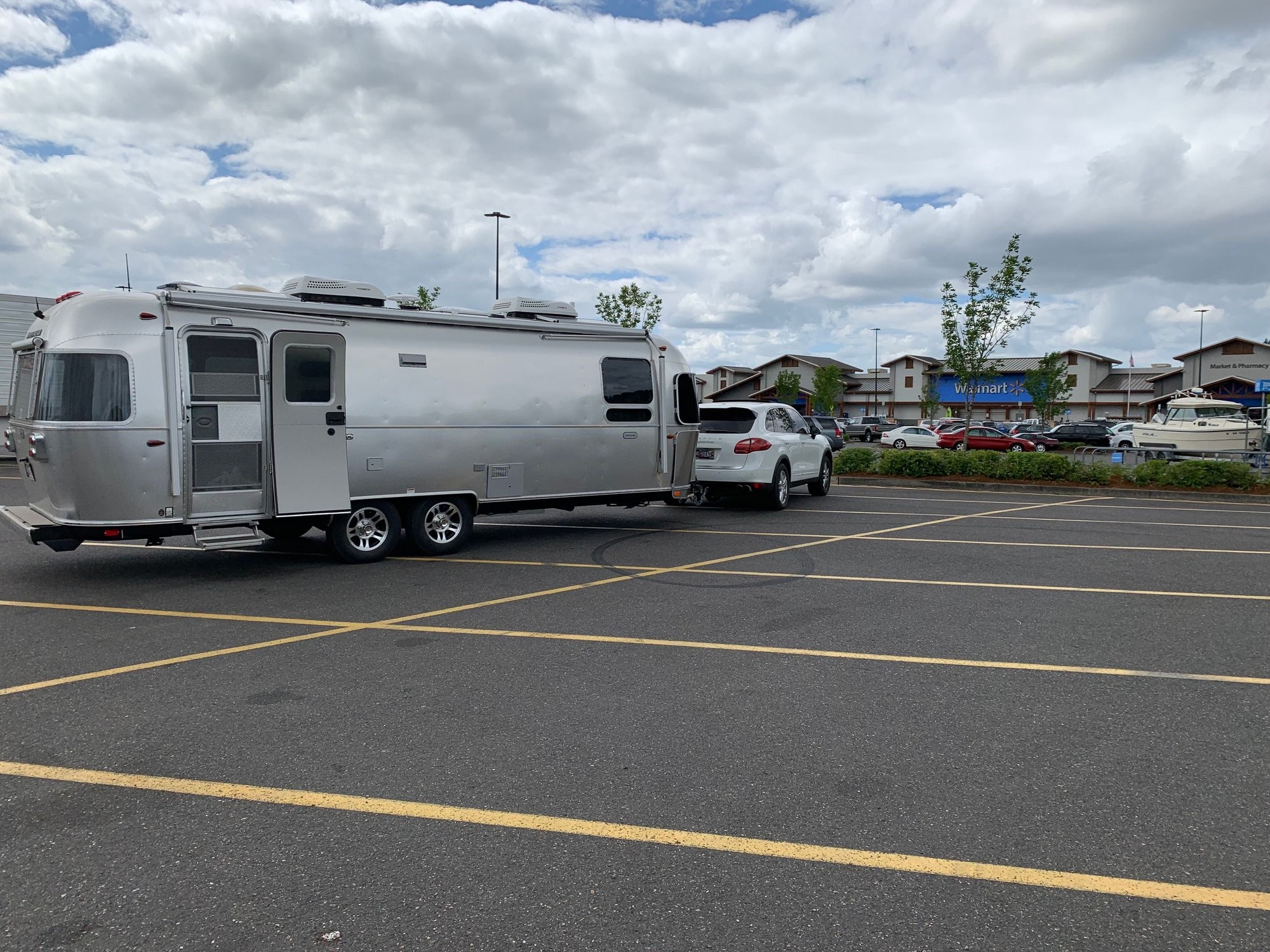 Porsche Cayenne Turbo effortlessly towing an Airstream, showcasing stability
Porsche Cayenne Turbo effortlessly towing an Airstream, showcasing stability
Braking Efficiency
The braking performance of the Cayenne Turbo while towing was outstanding, especially when utilizing the Prodigy P2 brake controller effectively. I experimented with various settings and found that a 3.3V setting with “Boost On” for highway driving and “Boost Off” for city driving worked best.
With “Boost On,” the trailer brakes provided significant stopping power, effectively slowing the entire rig. Above 45mph, I could feel the trailer assisting in braking, which instilled confidence and helped preserve the Cayenne’s expensive brake components. In one emergency braking situation from 60mph downhill, the Cayenne Turbo and Airstream stopped without any drama. The braking force was so strong that unsecured items shifted on the dashboard, highlighting the system’s effectiveness.
For downhill driving, I utilized the Triptonic automatic mode and manual downshifting. The Cayenne intelligently held the selected gear, leveraging engine braking to maintain a controlled speed without excessive brake application. Gentle brake inputs were sufficient, with the trailer brakes primarily handling the deceleration thanks to the “Boost On” setting.
In urban environments with frequent stops and starts, I switched “Boost Off.” With “Boost On” in city driving, the trailer brakes could be too aggressive, causing trailer skid and jerky stops. “Boost Off” ensured smooth and comfortable stops in slower traffic. Fine-tuning the brake controller voltage and boost settings was crucial to achieving optimal braking performance in various conditions.
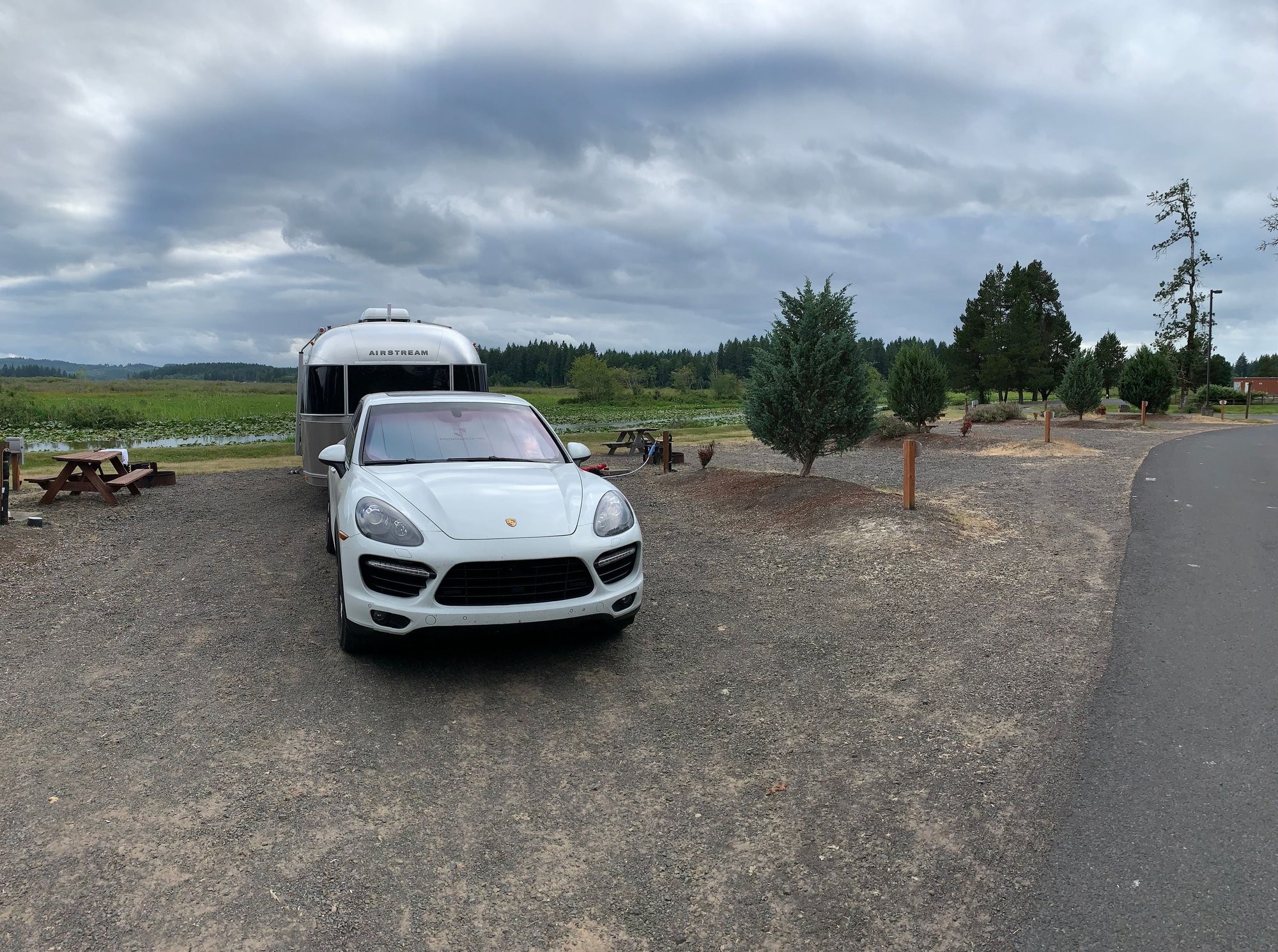 Close-up of Porsche Cayenne Turbo wheel and brakes, emphasizing braking power
Close-up of Porsche Cayenne Turbo wheel and brakes, emphasizing braking power
Towing Speed and Fuel Economy
My preferred towing speed with the 2012 Porsche Cayenne Turbo was between 60-63mph. This wasn’t due to stability concerns at higher speeds, but rather for optimizing fuel economy and a more relaxed driving experience. Setting the cruise control within this range allowed for hours of comfortable, consistent driving, primarily in the right lane, even as other traffic passed. While the speed limit was often 70mph, the marginal time saved by driving faster didn’t justify the significant fuel consumption increase.
Interestingly, even on steep uphill grades exceeding 7%, the Cayenne Turbo maintained speed without needing throttle adjustments, often passing other vehicles struggling on the incline. Fuel economy while towing averaged 12-13mpg. Over the entire 9,000-mile trip, including non-towing exploration, the average was around 14mpg. Driving at 70mph while towing reduced fuel economy to approximately 10.5mpg, further reinforcing the efficiency of the 60-63mph sweet spot.
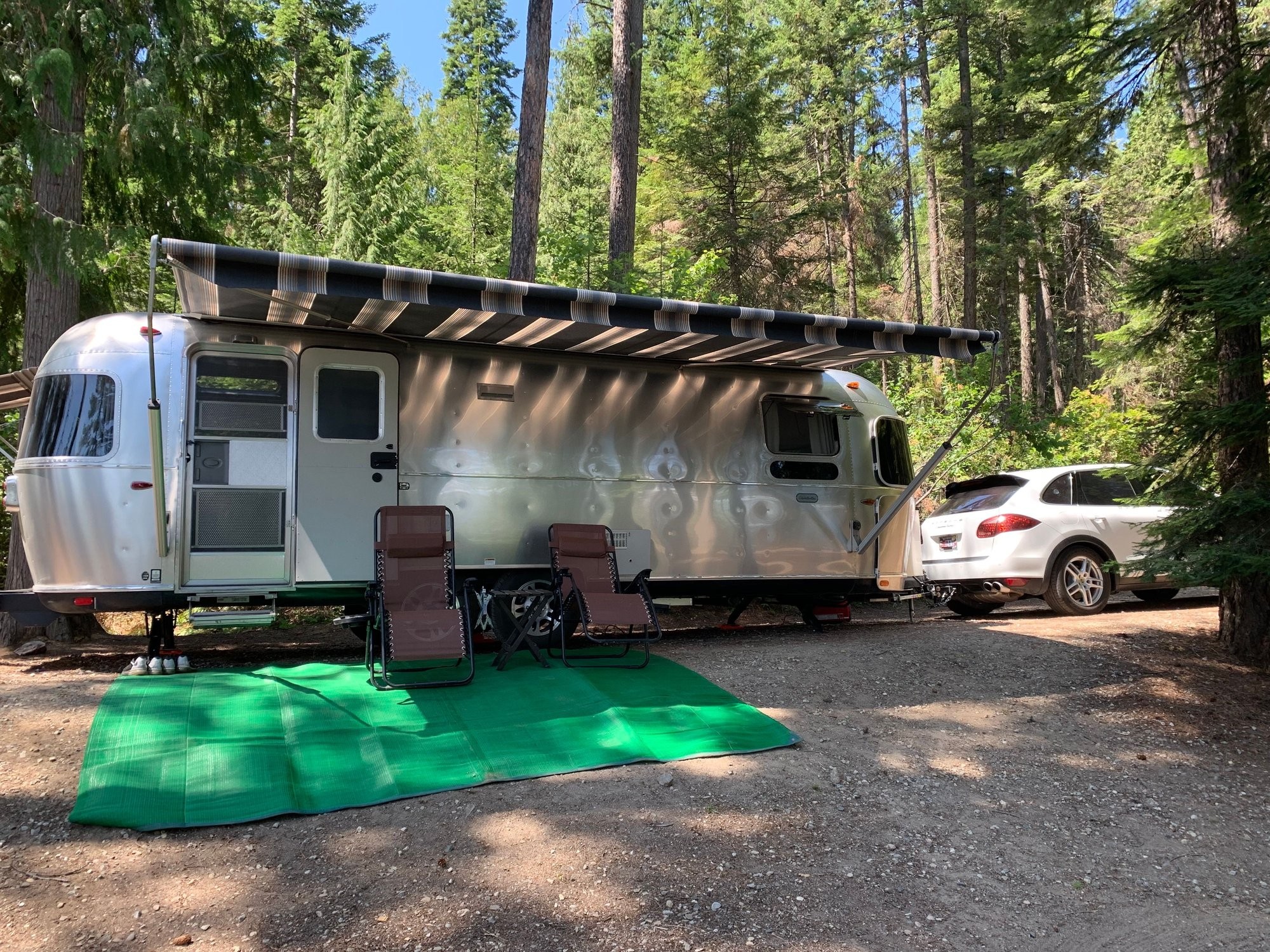 Fuel consumption gauge of Porsche Cayenne Turbo, illustrating MPG during towing
Fuel consumption gauge of Porsche Cayenne Turbo, illustrating MPG during towing
Engine and Water Temperatures
During steep uphill climbs (over 7% grade), the water temperature occasionally reached 220°F and oil temperature 225°F. However, these temperatures remained safely below the redline. Under normal driving conditions and grades below 7%, temperatures stayed within the standard operating range. On particularly steep inclines (over 9% with a 30mph speed limit), I turned off the AC as a precaution. Disabling the air conditioning noticeably helped manage water temperature, keeping it within acceptable limits even under strenuous conditions.
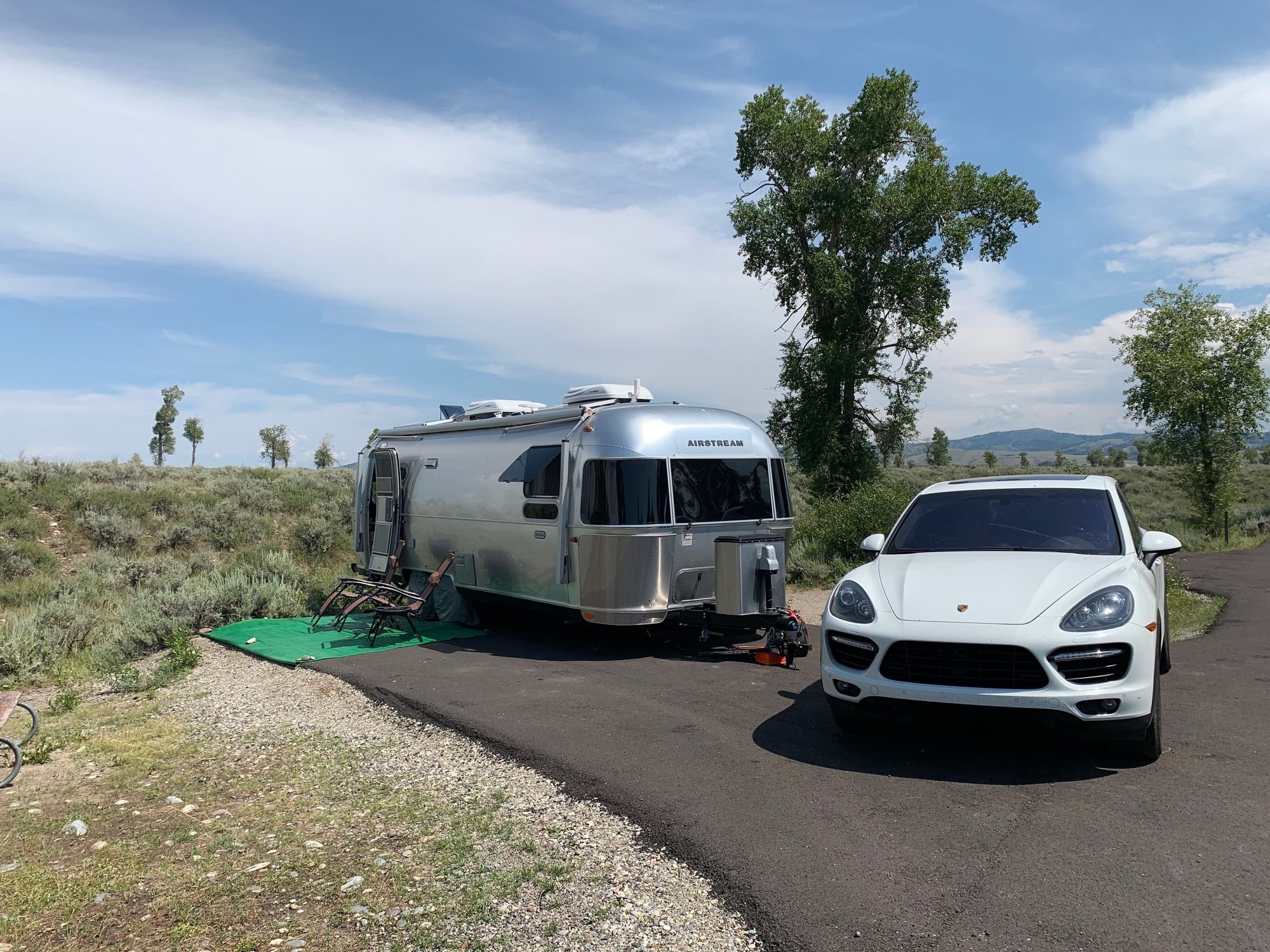 Engine temperature gauge of Porsche Cayenne Turbo, showing operating temperatures
Engine temperature gauge of Porsche Cayenne Turbo, showing operating temperatures
Mechanical Issues Encountered
While the towing performance of my 2012 Porsche Cayenne Turbo was commendable, I have encountered some mechanical issues that may or may not be related to towing, or simply due to the vehicle’s age and mileage (currently at 92,000 miles). My Cayenne is currently being inspected by a Porsche mechanic to diagnose these issues.
The mechanical problems include:
a. Rear Differential Clicking Noise: When the air suspension is raised to the highest level, a noticeable clicking noise emanates from the rear differential with each full wheel rotation. This noise disappears at the normal suspension setting.
b. Rear Differential Grinding Noise: A grinding noise is present in the rear differential during slow (2-10mph) turns, especially when the differential is under load.
c. Loud Grinding with Differential Lock: Engaging the center and/or rear differential lock exacerbates the grinding noise, making it significantly louder.
d. “Rear Differential Fault” Message: Occasionally, a “Rear Differential Fault” message appears upon engine start.
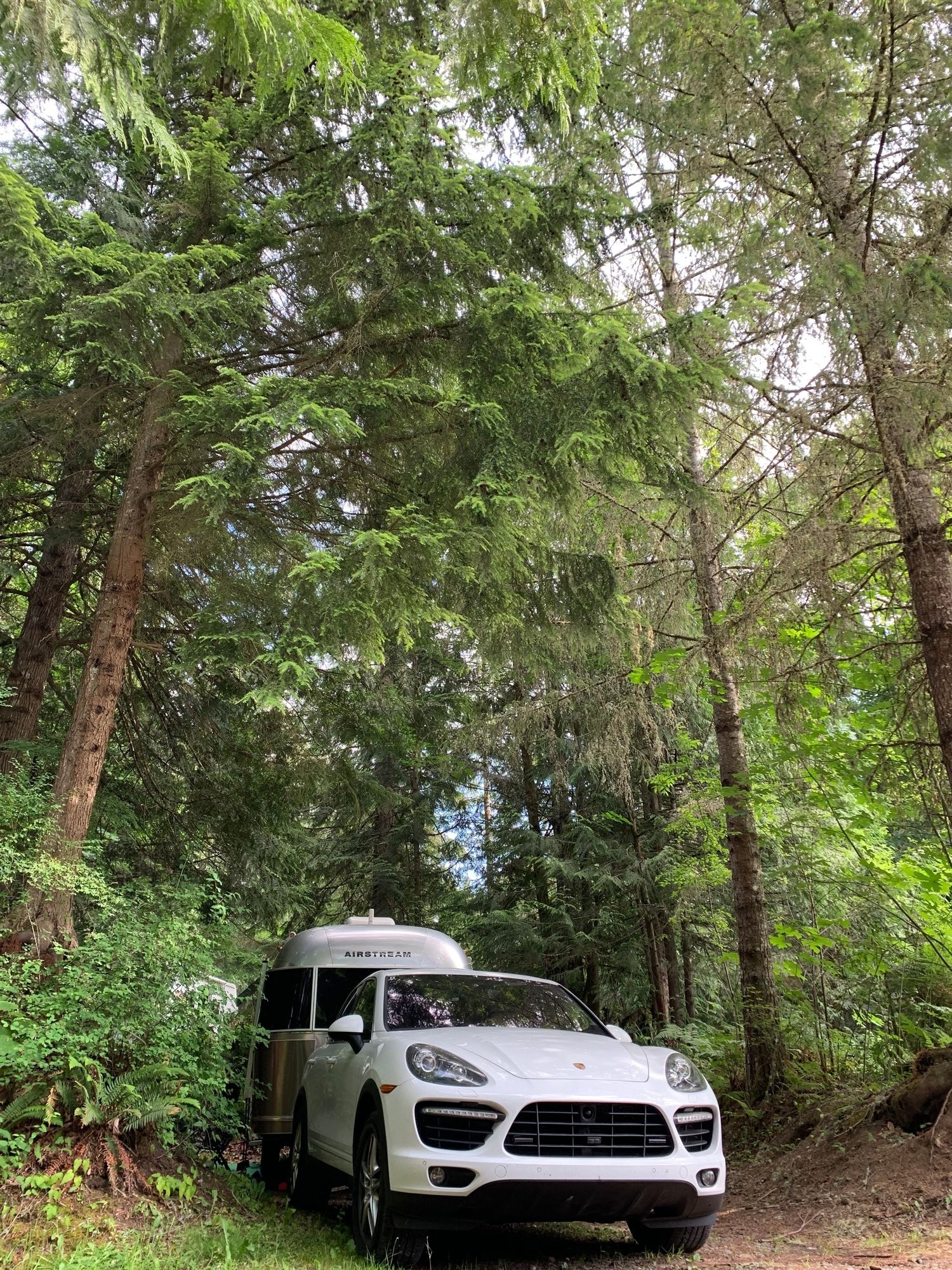 Image of Porsche Cayenne Turbo rear differential, highlighting potential issue area
Image of Porsche Cayenne Turbo rear differential, highlighting potential issue area
Depending on the diagnosis and repair costs, I am considering whether to repair and sell the Cayenne Turbo or proceed with repairs and keep it, especially with plans for another 10,000-mile towing trip next year. I need to be confident in the Cayenne’s reliability for such demanding journeys. If I lose confidence in the Cayenne for towing, I might consider replacing it with a 2020 Ford F-250 Diesel with the Tremor Package – a significant shift from potentially “underkill” to “overkill.”
I welcome any feedback or insights regarding these mechanical issues, particularly from those with experience in towing with a 2012 Porsche Cayenne Turbo or similar models. I have attached records of repairs and maintenance performed on my Cayenne since new, along with more photos from our towing adventure for your reference. I am happy to answer any questions to the best of my ability. Thank you for reading about my towing experience.